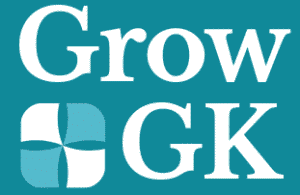Daily Static GK MCQs | Set-7 (07/11/2024)
| Welcome to our series on Daily Static GK MCQs for All Competitive Exams! As government job exams in India get tougher, candidates need to understand basic Static GK well.This series is designed to provide you with a daily dose of 15 important multiple-choice questions (MCQs) that cover a wide range of static GK topics, including history, geography, polity, economy, culture and more.These Static GK MCQs will help in exams such as the SSC, Railways, Banking, UPSC, State PSC, Judiciary, TET, etc. Each article aims to enhance your knowledge base and boost your confidence, ensuring you are well-prepared for the challenges of your upcoming exams. Regular practice with these MCQs will help you retain important information and improve your problem-solving skills and time management. Please Regularly Visit for daily updates. For Set-1 Click HERE. For Set-2 Click HERE. For Set-3 Click HERE. For Set-4 Click HERE. For Set-5 Click HERE. For Set-6 Click HERE. For Set-7 Click HERE. For Set- 8 Click HERE. |
1. The ‘dharma’ and ‘rita’ depict a central idea of ancient Vedic civilization of India.
In this context, consider the following statements.
1. ‘Dharma’ was a conception of obligations and the discharge of one’s duties to oneself and to others.
2. ‘Rita’ was the fundamental moral law governing the functioning of the universe and all it contained.
Which of the statements given above is/are correct?
(A) Only 1
(B) Only 2
(C) Both 1 and 2
(D) None of these
Answer: – (C) Both 1 and 2
2. Which of the following characterises / characterise the people of Indus Civilization?
1. They possessed great places and temples.
2. They worshipped, both male and female deities.
3. They employed horse-drawn chariots in warfare.
Select the correct answer using the code given below.
(A) 1 and 2
(B) Only 2
(C) All of these
(D) None of these
Answer:- (B) Only 2
3. Consider the following events.
1. Indigo Revolt
2. Santhal Rebellion
3. Deccan Riot
4. Mutiny of the Sepoys
The correct chronological sequence of these events is ____
(A) 4, 2, 1, 3
(B) 4, 2, 3, 1
(C) 2, 4, 3, 1
(D) 2, 4, 1, 3
Answer: – (D) 2, 4, 1, 3
4. Consider the following statements about the Mughal mansabdari system.
1. ‘Zat’ and ‘Savar’ ranks were granted.
2. The mansabdars were hereditary officers.
3. There were three categories of mansabdars.
4. They were paid salaries by the Diwan’s office.
Select the correct answer from the code given below.
Code
(A) 1, 2, 3 and 4
(B) 1, 2 and 3
(C) 1 and 3
(D) None of the above
Answer:- (C) 1 and 3
5. With reference to Ryotwari Settlement, consider the following statements.
1. The rent was paid directly by the peasants to the Government.
2. The Government gave Pattas to the Ryots.
3. The lands were surveyed and assessed before being taxed.
Which of the statement(s) given above is/are correct?
(A) Only 1
(B) 1 and 2
(C) 1, 2 and 3
(D) None of these
Answer: –(C) 1, 2 and 3
6. The author of ‘Hind Swaraj’ was ____
(A) B.G. Tilak
(B) Vinoba Bhave
(C) Chandra Shekhar Azad
(D) Mahatma Gandhi
Answer: – (D) Mahatma Gandhi
7. It happens during the photosynthesis in green plants ____
(A) Taking nitrogen and releasing oxygen
(B) Taking CO2 and releasing oxygen
(C) Taking oxygen and releasing CO2
(D) Taking oxygen and releasing nitrogen
Answer: – (B) Taking CO2 and releasing oxygen
8. O.M.R. stands for ____
(A) Octal Mark Reader
(B) Optical Machine Reader
(C) Octal Machine Reader
(D) Optical Mark Reader
Answer: – (D) Optical Mark Reader
9. Who among the following is the final authority to decide any question relating to disqualification of a Member of a House of Legislature of a State?
(A) Governor
(B) Speaker of the Legislative Assembly
(C) Chief Minister
(D) High Court
Answer: – (A) Governor
10. The cardinal features of political system in India are_____
1. It is a democratic republic.
2. It has a Parliamentary form of government.
3. The supreme power vests in People of India.
4. It provides for a unified authority. Select the correct answer from the code given below.
Code
(A) 1 and 2
(B) 1, 2 and 3
(C) 2, 3 and 4
(D) All the four
Answer: –(B) 1, 2 and 3
11. Most of the production of Natural gas in India comes from ___
(A) Andhra Pradesh Coast
(B) Gujarat Coast
(C) Bombay High
(D) Tamil Nadu Coast
Answer: – (C) Bombay High
12. Who among the following was closely associated with Green Revolution?
(A) Dr. M.S. Swaminathan
(B) Kr. Kurien
(C) C. Subrahmaniam
(D) Dr. A.P.J. Abdul Kalam
Answer: – (A) Dr. M.S. Swaminathan
13. Which one among the following rivers is the longest?
(A) Amazon
(B) Brahmaputra
(C) Nile
(D) Ganga
Answer: – (A) Amazon
14. Vande Mataram became the theme song of the Indian National Movement during ____
(A) Swadeshi Movement
(B) Champaran Movement
(C) Anti-movement of Rowlett Act
(D) Non-Coperation Movement
Answer: – (A) Swadeshi Movement
15. With which Mughal General did Shivaji sign the Treaty of Purandar is 1665?
(A) Diler Khan
(B) Jai Singh
(C) Jaswant Singh
(D) Shaista Khan
Answer: – (B) Jai Singh
